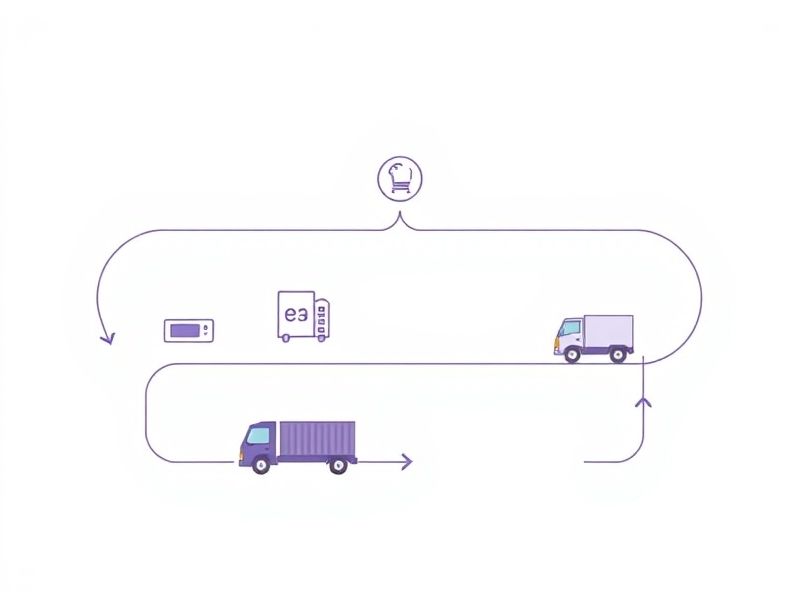Why Your Business Needs a Supplier Evaluation Scorecard System
Smart procurement decisions can make or break your business profitability. A supplier evaluation scorecard provides the data-driven framework you need to assess vendor performance objectively.
Without proper supplier assessment tools, businesses often struggle with:
- Inconsistent quality from vendors
- Hidden costs that erode profit margins
- Supply chain disruptions
- Poor vendor relationship management
Essential Components of an Effective Supplier Scorecard Template
Core Performance Metrics to Track
Your supplier evaluation dashboard should monitor these critical areas:
- Quality metrics: Defect rates, compliance scores, certification status
- Delivery performance: On-time delivery rates, lead time accuracy
- Cost effectiveness: Price competitiveness, total cost of ownership
- Service quality: Responsiveness, communication, problem resolution
- Financial stability: Credit ratings, payment terms, business continuity
Weighted Scoring System Setup
Different metrics deserve different importance levels. Assign weights based on your business priorities:
- Quality: 30-40% (critical for customer satisfaction)
- Delivery: 25-30% (impacts operations)
- Cost: 20-25% (affects profitability)
- Service: 10-15% (relationship factor)
- Financial: 5-10% (risk management)
Building Your Supplier Assessment Framework
Data Collection Methods
Gather supplier performance data through multiple channels:
- Automated system reports
- Regular supplier audits
- Customer feedback surveys
- Internal team evaluations
- Third-party assessments
Scoring Scale Implementation
Use a consistent 1-5 scale for all metrics:
- 5 = Exceptional (exceeds expectations)
- 4 = Good (meets expectations)
- 3 = Acceptable (basic requirements met)
- 2 = Below average (improvement needed)
- 1 = Poor (immediate action required)
Excel Dashboard Design Best Practices
Visual Elements for Quick Analysis
Your supplier scorecard dashboard should include:
- Color-coded performance indicators
- Trend charts showing performance over time
- Comparison tables for multiple suppliers
- Alert systems for underperforming vendors
Automated Calculation Features
Build formulas that automatically:
- Calculate weighted scores
- Rank suppliers by performance
- Generate performance summaries
- Update dashboards with new data
Implementation Strategy for Supplier Scorecards
Phase 1: Initial Setup
- Define evaluation criteria specific to your industry
- Establish baseline performance standards
- Create data collection processes
- Train team members on scorecard usage
Phase 2: Regular Monitoring
- Schedule monthly performance reviews
- Conduct quarterly supplier meetings
- Update scorecards with fresh data
- Identify improvement opportunities
Phase 3: Continuous Improvement
- Refine metrics based on business changes
- Adjust weights as priorities shift
- Expand scorecard to new supplier categories
- Integrate with procurement systems
Common Supplier Evaluation Mistakes to Avoid
Many businesses fail with supplier scorecards because they:
- Focus only on price instead of total value
- Use outdated or irrelevant metrics
- Fail to communicate expectations clearly
- Don’t act on scorecard results
- Overcomplicate the evaluation process
Supplier Performance Improvement Action Plan
When suppliers underperform, follow this structured approach:
- Identify root causes: Analyze data to understand performance gaps
- Communicate issues: Schedule meetings to discuss concerns
- Develop improvement plans: Set specific, measurable goals
- Monitor progress: Track improvements monthly
- Make decisions: Reward top performers, replace poor ones
Ready-to-Use Supplier Evaluation Tools
Quick Assessment Checklist
| Evaluation Area | Key Questions | Score (1-5) |
|---|---|---|
| Quality | Does supplier meet quality standards consistently? | ___ |
| Delivery | Are deliveries on time and complete? | ___ |
| Cost | Are prices competitive and transparent? | ___ |
| Service | Is communication responsive and helpful? | ___ |
| Innovation | Does supplier suggest improvements? | ___ |
Monthly Supplier Review Template
| Metric | Target | Actual | Variance | Action Required |
|---|---|---|---|---|
| On-time delivery % | 95% | ___ | ___ | ___ |
| Quality score | 4.5/5 | ___ | ___ | ___ |
| Cost variance % | ±2% | ___ | ___ | ___ |
| Response time (hours) | 24 | ___ | ___ | ___ |
Supplier Decision Matrix
Use this framework to make supplier selection decisions:
| Overall Score | Action | Review Frequency |
|---|---|---|
| 4.5 – 5.0 | Strategic partner – expand relationship | Quarterly |
| 3.5 – 4.4 | Preferred supplier – maintain current level | Monthly |
| 2.5 – 3.4 | Acceptable – monitor closely | Bi-weekly |
| 1.5 – 2.4 | Improvement plan required | Weekly |
| 1.0 – 1.4 | Consider replacement | Immediate action |
Transform your procurement process with comprehensive business planning tools. The Financial Business Plan Excel Templates provide advanced frameworks for supplier management, cost analysis, and performance tracking that complement your supplier evaluation efforts.































